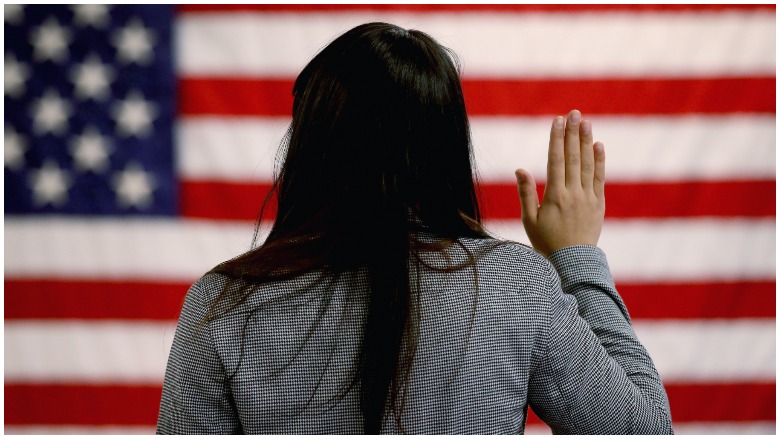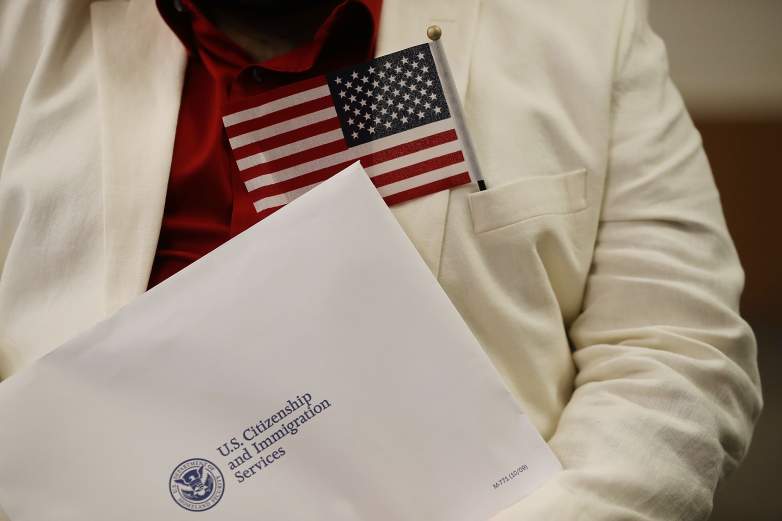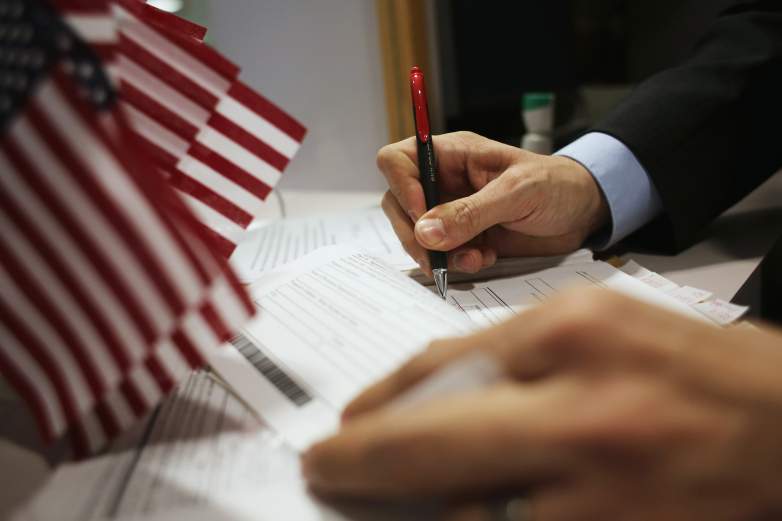
Getty The U.S. Citizenship and Immigration Services is furloughing around 13,400 employees at the end of the month.
The U.S. Citizenship and Immigration Services is furloughing around 13,400 employees at the end of the month after Congress failed to agree on a second coronavirus stimulus package.
The federal agency, which is responsible for providing citizenship, green cards and visas to immigrants, notified on Monday 2/3 of its 20,000 employees of upcoming furloughs due to “budget shortfalls,” USA Today reported. The furloughs will begin Aug. 30.
“In the past few months, USCIS has taken action to avert a fiscal crisis, including limiting spending to salary and mission-critical activities,” an agency spokesperson told the outlet. “Without congressional intervention, USCIS will have to take drastic actions to keep the agency solvent.”
USCIS asked Congress in May for $1.2 billion in the next relief package, but top Democrat and Republican legislators failed to see eye-to-eye, the outlet continued.
Trump issued several executive orders over the weekend aimed at providing relief for Americans struggling through the pandemic after Congress did not reach an agreement by its self-imposed deadline on Aug. 8.
The president’s orders targeted unemployment and payroll tax cuts, among other things, but did not address immigration services, USA Today continued.
Here’s what you need to know:
Furloughs Could Halt the Immigration System Completely

Getty
CNN reported that furloughs withing the agency, under the umbrella of the Department of Homeland Security, could bring immigration services to a complete stop.
“There’s currently no plan B,” a congressional aide told CNN.
“The question is whether (USCIS will) delay furloughs and give us that opportunity,” the aide added.
The USCIS has an operating budget of $14.8 billion, according to Vice News, in which nearly 97% is funded through immigration fees.
The agency blamed declining revenues stemming from the COVID-19 pandemic as the reason for the furloughs, the outlet added.
“USCIS has seen a 50% drop in receipts and incoming fees starting in March and estimates that application and petition receipts will stay well below plan through the end of Fiscal Year 2020,” an USCIS spokesperson told Vice. “This dramatic drop in revenue has made it impossible for our agency to operate at full capacity. Without additional funding from Congress before August 3, USCIS has no choice but to administratively furlough a substantial portion of our workforce.”
“What they aren’t saying is that in addition to COVID-19, Trump keeps canceling visa categories that make us money, like H-1B [visas], certain J1s, and green card applications.”
USCIS initially planned to begin the furloughs Aug. 3, but moved the date to the end of the month due to “assurances from Congress and an uptick in application and petition receipts,” CNN disclosed.
Furloughs Could Last 3 Months or Longer

Getty
USCIS employees were notified of the furloughs via email on the morning of Aug. 10, claiming they would last for at least 30 days with the potential to continue for “three months or longer,” Vice News reported.
“Though we continue to have productive conversations with Congress, we want employees who may be furloughed to have sufficient time to prepare,” an agency spokesperson told the outlet. “Further, we are legally required to provide employees with advance written notice at least 30 calendar days prior to the effective date of an expected furlough.”
Roughly 1,500 Workers Were Furloughed From the Agency’s Refugee, Asylum, and International Operations Division

Getty
More than 600 of those staff members worked in “non-supervisory” roles, according to Vice News.
“We’re left with a skeleton crew, and we’re trying to keep as much adjudicative and administrative work as possible to keep the lights on,” Jennifer Higgins, the RAIO division’s associate director, told staff, according to Vice.
READ NEXT: COVID-19 Extended Unemployment Benefits: 1 Million May Not Get the Extra $400
